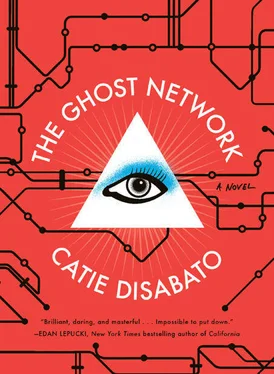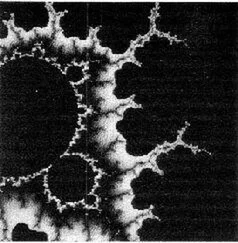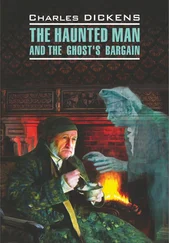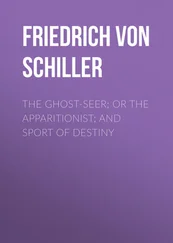Understanding the Situationists’ desire to remake the city begins with World War II, specifically with the bombings carried out all over Europe by both the Allies and the Luftwaffe. After the war, huge swathes of European cities had to be rebuilt from rubble. An architectural design movement called “modernism” or “functionalism,” which favored function and rationality over all else, dominated the rebuilding process. As functionalism took over, art and spontaneity were leeched out of city planning. Even in cities like Paris that didn’t sustain much wartime damage, urban planners developed and implemented new architectural techniques for moving people around like products on a belt in a factory.
One of the first Situationist writings, “Formulary for the New Urbanism,” written by Chtcheglov and heavily based on Debord’s ideas, adescribed this “disease” of functionalism and the Situationists’ cure: unitary urbanism . Unitary urbanism is the Situationist social theory that art and the movements of everyday urban life shouldn’t be separated into isolated sectors, but continually mixed together as a way of life. By collapsing the boundaries between art and life, work and leisure, public and private, the Situationists wanted to recast the city as a space of fun and play.
In his fantastic analysis of the Situationists’ early years The Situationist City , Simon Sadler discusses the Situationists’ desire to “collectively rethink the city.” To fully escape and undo functionalism, Debord and the SI imagined building a brand new city in the Situationist image, which would eventually span the whole globe. The Situationists weren’t trying to do something simple; they wanted to change the whole world in a massive way. “They were at war with the whole world, but lightheartedly.” bAs an answer to their hunger for a new way to live, in the mid- to late 1950s Constant began developing the plans for this world-changing city, which Debord named New Babylon.
Constant was born in Amsterdam in 1920. His father was a corporate manager and his mother was a music lover. Constant took up the violin at age ten and continued to play until his death. Debord met Constant through Jorn, the Situationist whose art-world success funded most of the SI’s exploits.
In 1957, when the SI formed, Constant was in the midst of his second marriage (of an eventual four). He had a receding hairline, a sharp wit, and by all accounts smiled often. Debord and Constant’s friendship bloomed over long stretches of drinking and talking at late night cafés when they were in the same city, and over the exchange of letters when they were apart. They both dedicated themselves passionately to their various artistic and political projects, and for a time they got along very well because of that shared enthusiasm.
Riffing off Debord’s ideas, Constant’s New Babylon was the only large-scale project to fully incorporate all the Situationist ideas about aesthetics. Constant believed architecture should be playful, and respond to desire rather than urban efficiency. In New Babylon, no one was treated like a statistic on a Traffic & Congestion report. Instead, New Babylon was “une autre ville pour autre vie” —another city for another life.
Constant designed models of sections of New Babylon; he depicted New Babylon in paintings and sketches. He also collaborated with Debord to create collage art, the most famous of which is called “The Situationist City,” which served as an aesthetic guideline for New Babylon. Constant also wrote frequently about New Babylon for Internationale Situationniste .
These collected renderings showed New Babylon as a giant playground, a city whose shape was constantly shifting because inhabitants would build and rebuild constantly, using lightweight building materials, like future plastics or fiberglass. The continual building of the city would be like a huge game, with all New Babylonians in a state of perpetual play and leisure. Work, commerce, and culture as we know it would dissolve. The continual game of world building would dominate life.
For New Babylon’s actual physical spaces, Constant designed transitory buildings, which would shift and change based on the whims and desires of the inhabitants: a “restless architecture.” All the residents of New Babylon would engage in an endless drift, their lives defined by an equally endless chain of encounters, both between themselves and other drifters, and themselves and the architecture of the city around them.
Mark Wigley gives the best description of the city in an essay for Architectural Design magazine:
New Babylon is to be a covered city, suspended high above the ground on huge columns. All automobile traffic is isolated on the ground plane, beneath which trains and fully automated factories are buried. Enormous multilevel structures … are strung together in a chain that spreads across the landscape. This “endless expanse” of interior space is artificially lit and air-conditioned. Its inhabitants are given access to powerful, ambience-creating resources to construct their own space whenever and wherever they desire. The qualities of each space can be adjusted. Light, acoustics, colour, ventilation, texture, temperature and moisture are infinitely variable. Moveable floors, partitions, ramps, ladders, bridges and stairs are used to construct “veritable labyrinths of the most heterogeneous forms” in which desires continuously interact. Sensuous space may rise from action but also generate it: “New Babylonians play a game of their own designing, against a backdrop they have designed themselves.” c
Constant intended New Babylon to carefully interact with the structure of the cities and non-urban areas it was suspended above. He and Debord planned to integrate the first vestiges of New Babylon architecture with some existing place — they didn’t mention exactly where, or even vaguely where — and then spread it outwards. In the Internationale Situationniste , a writer in an unattributed essay floated the idea of building a base camp, possibly on the Alle des Cygnes, a long, narrow uninhabited island on the Seine. The island connects two bridges, the Pont de Bir-Hakein and Pont de Grenelle. Using the bridges, the Situationists could venture into the actual city, drifting, creating situations, and slowly converting the areas around the Alle des Cygnes until they became part of New Babylon — and so on, until Europe, Asia, and Africa disappeared into New Babylon. Then New Babylon could venture into Alaska, via Russia (perhaps sailing there on some kind of New Babylonian fleet, though the author or authors of the unsigned article weren’t specific on that count). dDebord and Constant were adamant that New Babylon wouldn’t sequester itself from the rest of the world, but rather integrate itself continuously. He didn’t want to create an isolated utopia, which he called “holiday resorts.” He didn’t want to be known as that kind of failure. “New Babylon is a whole world at play” e[ italics mine ].
However, New Babylon was also doomed from the beginning, because Constant gestured only vaguely toward the practical matter of building the city. He never explained, in practical real-world terms, what the “ambience-creating recourses” would be. He never described the specific mechanisms that would power and control the city. He only vaguely referred to a co-operative system of repair and public safety. The “how” didn’t matter to Constant or to Debord at the time, only the ideas.
The SI also suffered early on from logistical complications: too many strong personalities living in cities and countries too far flung. Conceptually, they could never rally together behind one clear model or goal. Jorn was too preoccupied with his successful career as an artist; Chtcheglov went insane and, besides that, had all the fickleness of youth. Constant wanted to eradicate all artistic work from the moment, while at the same time diving head first into New Babylon, which some members thought of as an art project.
Читать дальше












